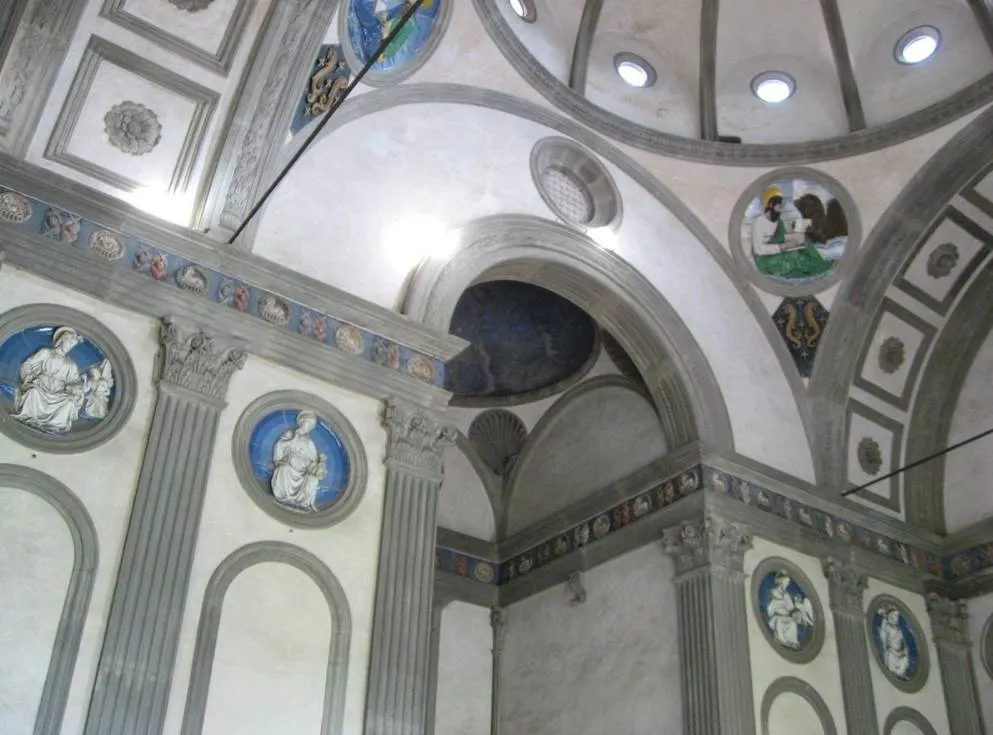The birthplace of the Renaissance is home to some of the most amazing Renaissance buildings ever constructed.
This makes it no surprise that many of these were designed by a Renaissance artist considered to be the founding father of Renaissance architecture, Filippo Brunelleschi (1377-1446).
Let’s take a closer look at some of the most interesting facts about the Pazzi Chapel, one of the architect’s most fascinating masterpieces.
1. It’s part of a complex that adjoins a famous church in Florence
Florence is not only the capital of the Tuscany region in Central Italy but is also considered to be the birthplace of the art movement that emerged during a revival of the interest in ancient art and architecture.
One of the prime examples of Early Renaissance architecture is credited to the man who made the switch from the medieval Gothic style to a type of architecture that aimed to restore a sense of order.
The Pazzi Chapel is located in the first cloister of the Basilica di Santa Croce in Florence. This minor basilica is one of the multiple amazing churches in the city and is famous for being the final resting place of some of the greatest minds in history, including Michelangelo Buonarroti, Lorenzo Ghiberti, Galileo Galilei, and Niccolò Machiavelli, to name just a few.

2. It was commissioned by a rich family in the city in the 15th-century
As the name of the chapel suggests, it was commissioned by the Pazzi family, the second-richest family in Florence in the 15th century after the Medici family.
The Pazzi’s grew their influence throughout the Middle Ages and they acquired their wealth from the banking business at this time in history. The funds for the building were amassed in 1429 but the structure was only constructed between 1442 and 1443.
Although the main purpose of the Pazzi Chapel was to serve as the cathedral chapter house, a meeting place for monks and clergymen, they were also allowed to bury family members here.

Some historians have suggested that the chapel was built to emphasize the family’s power, especially because it was built during an ongoing war.
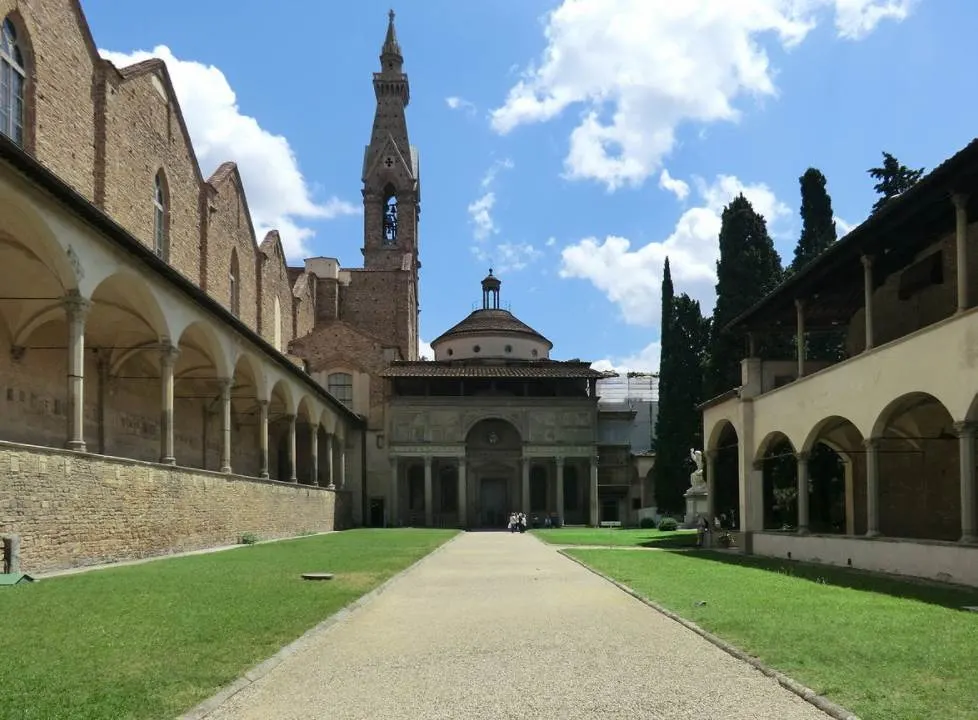
3. It’s probably that Brunelleschi only designed the structure
Filippo Brunelleschi only died in 1446 which means that he was still alive when the work was completed in 1443. It’s very likely, however, that he wasn’t involved in the actual planning and construction phase of the project.
Some architects that have been suggested to have completed the structure are Giuliano da Maiano and Michelozzo. The latter is famous for designing the Palazzo Medici in Florence.
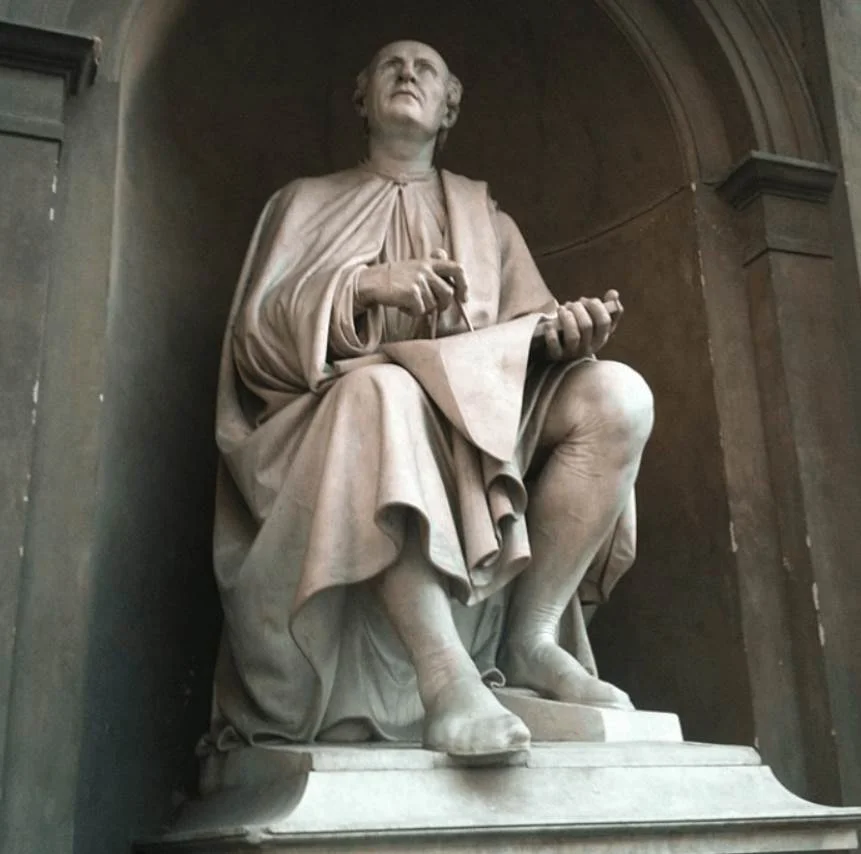
4. It resembles a structure located in another famous church in Florence
Brunelleschi is credited with the design of the chapel because it resembles the design of the Old Sacristy of the Basilica of San Lorenzo, an amazing church and one of his first major projects.
The Old Sacristy or “Sagrestia Vecchia” of San Lorenzo was constructed between 1419 and 1440 and served as one of the final resting places of the members of the Medici family.
This rivalry makes it very likely that the Pazzi family wanted a similar structure built to emphasize their power in the city, and what better person to hire for the job than the most renowned architect of the early 15th century, right?
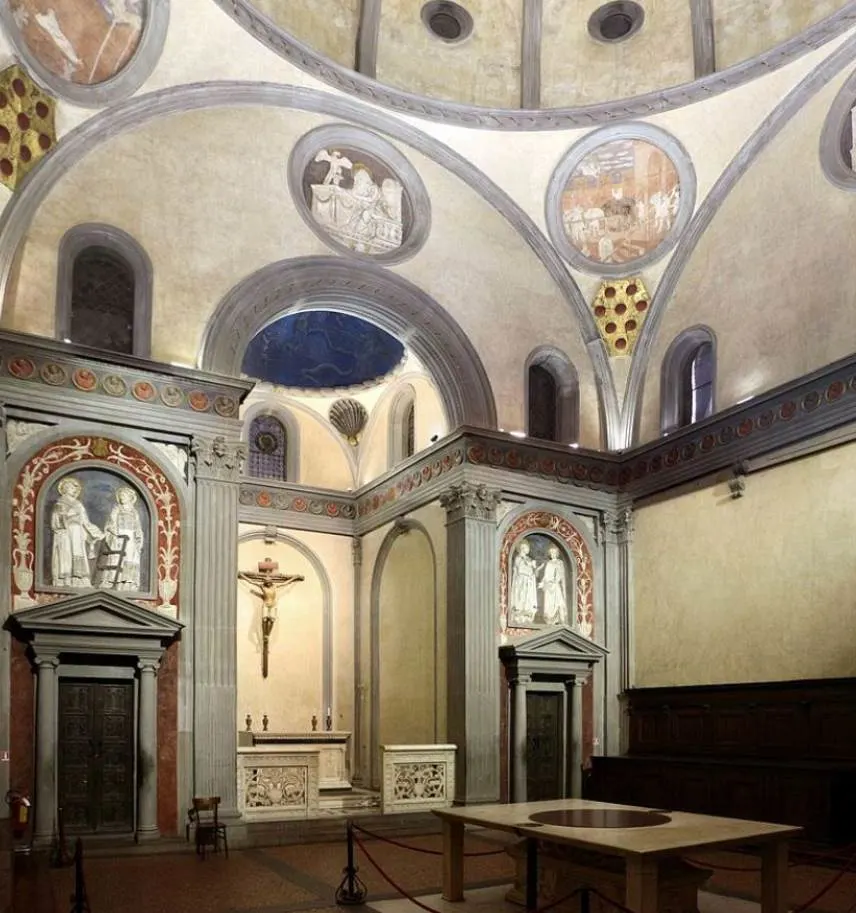
5. The façade would have looked quite differently without the porch
The main project of Filippo Brunelleschi was the main church in the city, Florence Cathedral, a structure that became world-famous for being the first massive dome to be completed since ancient times. This amazing dome remains the largest brick dome in the world today.
Because he was preoccupied his entire career with various features of Florence Cathedral, he didn’t always complete his other works. This includes the Ospedale degli Innocenti and probably the Pazzi Chapel as well.
What strengthens this theory is that the façade of the chapel was probably started by Filippo Brunelleshi but never completed. The architect who completed the project built a porch in front of it instead.
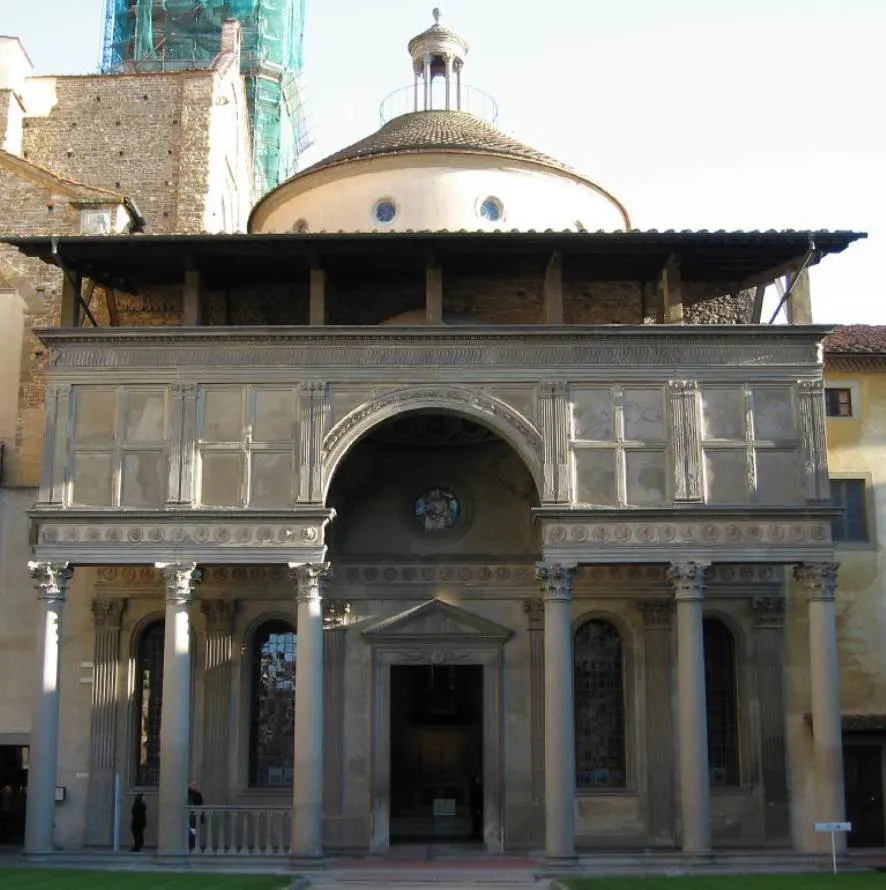
6. Both the porch and the chapel itself feature a Renaissance dome
Although the porch looks rather simple from the outside, it’s an equally remarkable architectural masterpiece.
Just like the chapel itself, it features a remarkable dome that is nicer than the one inside the main structure as it’s heavily decorated.
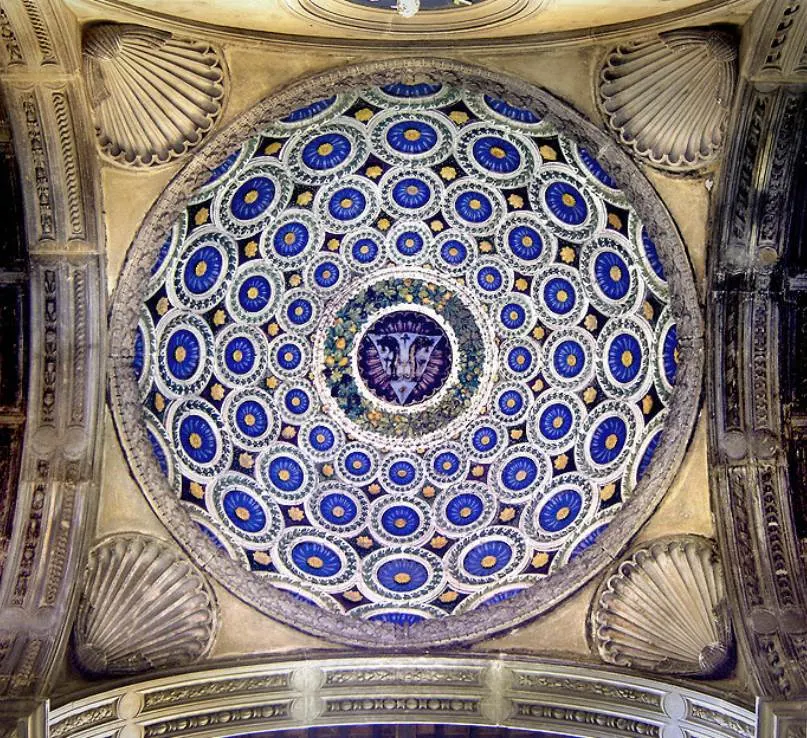
7. The pilasters inside the chapel only have a decorative purpose
The interior of the chapel is dominated by a grey sandstone known as “pietra serena.” This is one of the highest quality types of sandstone in the world and was often used during the Renaissance period in Florence.
Although it appears as if the columns inside the chapel are supporting the arches and domes of the building, this is not the case. The masonry walls are the load-bearing elements of the chapel which means the columns were merely carved as a form of decoration.
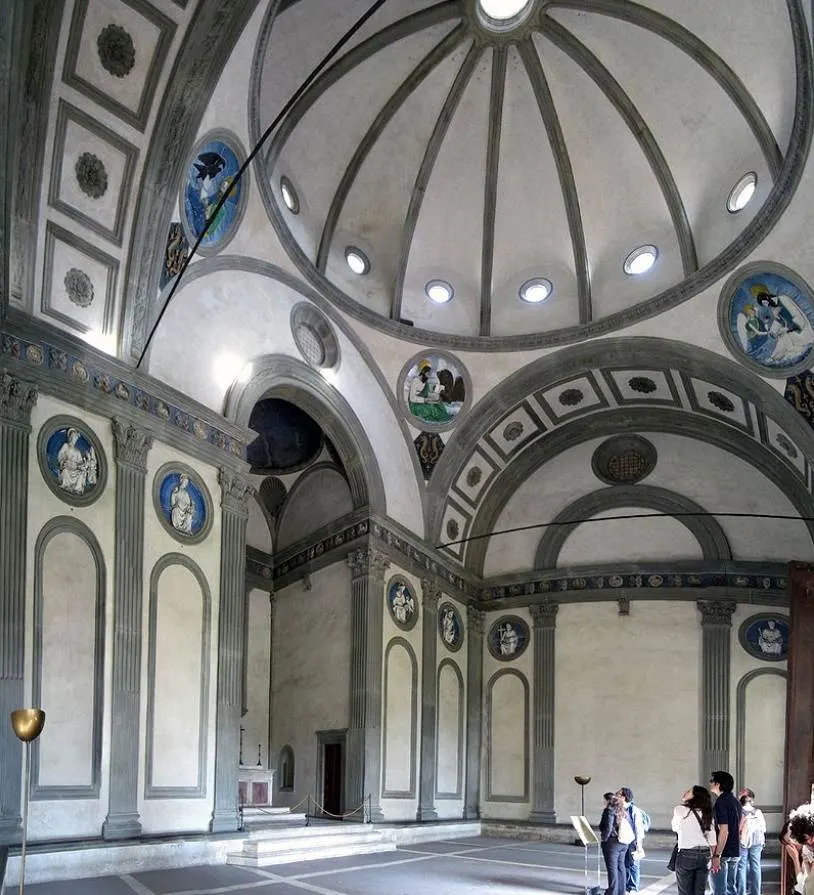
8. It features a trademark of the Early Renaissance architectural style
The layout of the chapel is a bit unusual because it was built on top of the foundations of an existing structure. Unlike the Old Sacristy in the Basilica of San Lorenzo which has a square shape, this structure had a rectangular shape.
Regardless of this notion, the architect did everything he could to integrate a sense of harmony that was based on the ideals of Classical architecture, hence the altar was placed transversely.
Some of the most interesting decorative features inside the chapel apart from the carved pilasters are the roundels. These also emerged featuring children above the loggia of the Hospital of the Innocents which Brunelleshi designed.
Inside the Pazzi Chapel, the tondi depict seated Apostles and were sculpted by Florentine sculptor Luca della Robbia (1400-1488). Some roundels depict the Evangelists and these could be works by Donatello.
